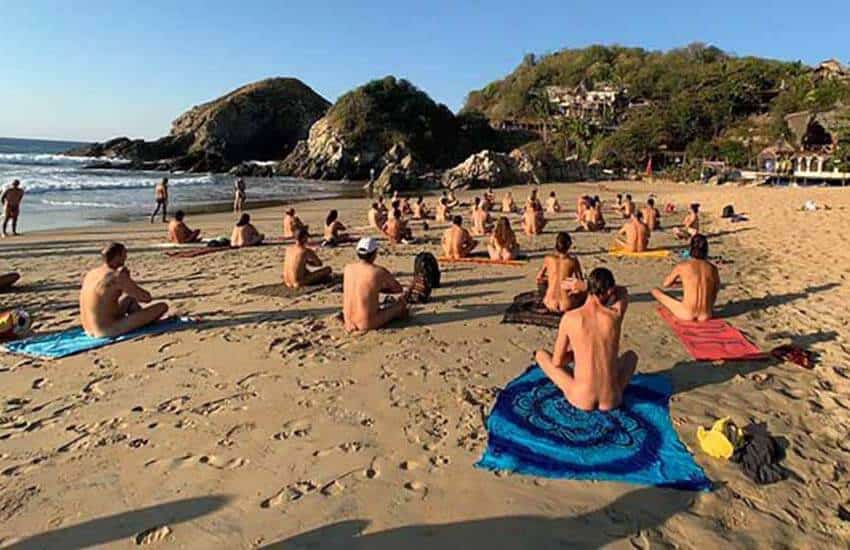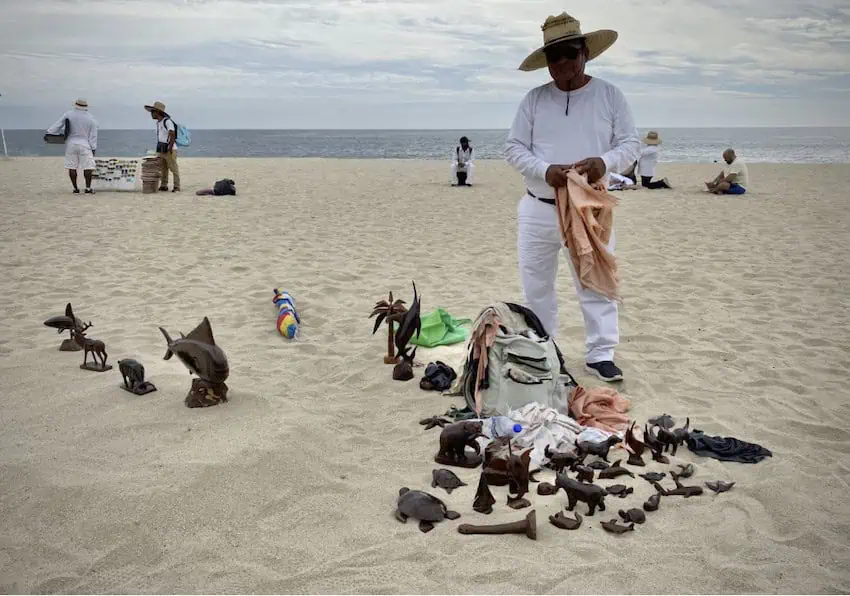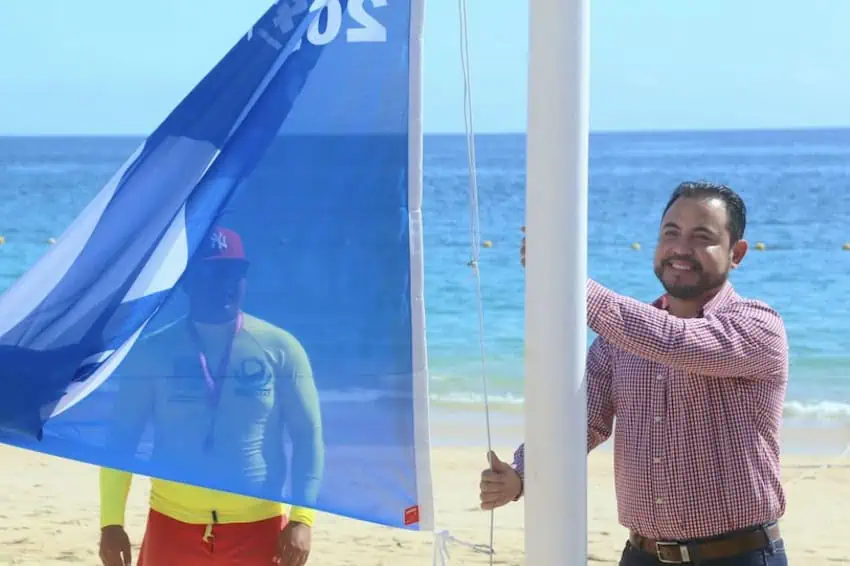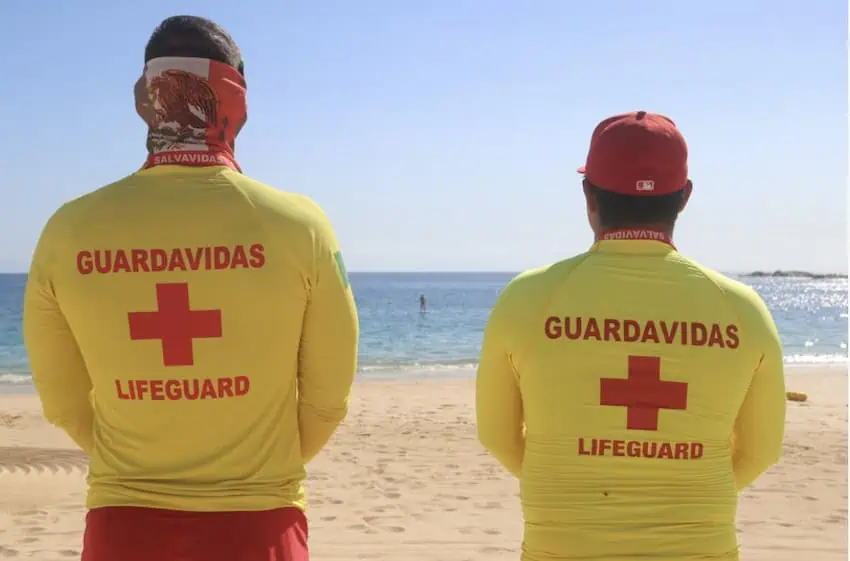Los Cabos beaches are a year-round attraction, but summer is the slowest season. Thus, it’s the optimal time for government officials to inaugurate new programs, replace equipment, or revamp existing services. There’s a little of all three going on right now in Los Cabos and La Paz, along with the floating of trial balloons to judge public sentiment on new initiatives.
Is La Paz getting a nude beach?

The ultimate trial balloon was recently let loose in La Paz regarding nudity. Nude beaches, of course, are a rarity in Mexico. Outside Zipolite in Oaxaca, there aren’t any, although Playa del Carmen in Quintana Roo used to have one, and the Riviera Maya does have some adults-only resorts where clothing is optional. Tourists have also been known to occasionally take some liberties on the nation’s beaches, but as far as legal recognition goes, Playa Zipolite remains the only officially sanctioned nude beach in Mexico.
However, there might be a possibility for one in La Paz. Well, the municipality of La Paz, anyway. It would have to be an area with little traffic so as not to offend the sensibilities of locals, and indeed, the area proposed by the La Paz comptroller, Jorge Pável Castro Ríos, in an interview with Diario El Independiente, is about as low traffic as it gets: between Playas El Saltito and El Carrizalito.
He noted that no formal requests have been made to date, and that permits would have to be acquired from the appropriate authorities. But the fact that it was brought up at all does seem to suggest that La Paz might be amenable to the tourism dollars and media interest generated by such a proposal.
Vendor access is being limited on Los Cabos beaches

Life is good on Los Cabos’ beautiful beaches. But if there is a complaint, particularly on the more popular playas, it’s that there are way too many vendors. Local business owners, who have heard the complaints from tourists for years, have been vocal in pushing the local government to crack down on the many unauthorized vendors found on beaches like Playa El Médano in Cabo San Lucas, some of whom come from other states during the high tourist season.
It appears their voices, on behalf of innumerable harried tourists, have finally been heard. Over 300 vendors have been swept from local beaches by authorities, and moving forward, only those who are properly permitted and wear the official uniform—a long-sleeved white shirt—will be allowed to sell their wares. New uniforms are expected to be issued to the 698 paid-up vendors this summer. ID cards will also be issued to those who ponied up the 1,200 pesos to renew their permit, and an additional 600 pesos for the shirt.
That still seems like an awful lot of vendors pestering tourists, but at least it’s easy to see them coming.
Los Cabos has the only two A+ Blue Flag beaches in Mexico

When the Foundation for Environmental Education (FEE) announced its Blue Flag beaches for 2024 – 2025, Los Cabos had 25 of Mexico’s 78 awarded beaches, the most of any single municipality. However, even among beaches heralded for their cleanliness, sustainability, and services, there are levels.
For example, there is an A+ designation that signifies the very highest achievement obtainable under the Blue Flag banner, meaning not only does a beach meet all 33 international criteria for water quality standards, safety, services, and environmental management and education, but it maintains cleanliness at a truly exceptional level (no mean feat given the amount of garbage regularly hauled from local beaches).
These standards are so stringent that to date, only two beaches in Mexico have ever qualified: Playas Palmilla and Santa María in Los Cabos. The two A+ awardees were recently announced after a two-week audit, bringing attention to just how pristinely maintained these coastal stretches are, in addition to their aesthetic beauty.
Naturally, that means the other local beaches aren’t operating at A+ levels. Blue Flag awardee Playa El Chileno, notably, appears to be struggling to maintain even the basic standard. For example, there have been reports of activities prohibited under Blue Flag rules, including unlicensed food and alcohol sales, and the unauthorized renting of beach chairs to tourists. Vendors without permits, of the kind mentioned earlier, have also allegedly been harassing beachgoers there.
Play El Chileno, it should be pointed out, is a very popular beach, particularly among locals. It’s also very beautiful, with excellent swimming and snorkeling. However, despite being a perennial Blue Flag winner and one of the first five beaches ever to achieve the honor in Mexico (dating back to 2014), it could be in danger of losing that status.
It wouldn’t be the first. The thing about Blue Flag beaches is that the quality has to be consistently maintained, which is sometimes hard to do. But Los Cabos’ government has shown a commitment to keeping its beaches in excellent condition, resulting not only in its record number of Blue Flag playas, but also 17 newly minted Platinum ones. This honor, like the Blue Flag, is premised on cleanliness, services, and sustainability. But it’s administered not by FEE, but rather by the domestic Instituto Mexicano de Normalización y Certificación.
New signs delivered to popular Los Cabos beaches

New signage is also being delivered to some Los Cabos beaches this summer, as part of a Zofemat (Zona Federal Marítimo Terrestre) initiative to promote self-care and safety. The signs will showcase plenty of useful information, including an explanation of the flag system used to update the water conditions for swimming or other aquatic activities.
No, this has nothing to do with the aforementioned blue or platinum flags. Rather, it refers to color-coded flags like the green, yellow, and red ones that are occasionally flown, and which, like the colors of a stop light, tell you whether you can swim because conditions are safe, you should take caution, or avoid getting in the water altogether. White flags, meanwhile, mean there are jellyfish in the water, while black flags indicate beach closure.
The signs weren’t installed at all beaches, but only at those that see the most traffic.
Chris Sands is the Cabo San Lucas local expert for the USA Today travel website 10 Best, writer of Fodor’s Los Cabos travel guidebook and a contributor to numerous websites and publications, including Tasting Table, Marriott Bonvoy Traveler, Forbes Travel Guide, Porthole Cruise, Cabo Living and Mexico News Daily. His specialty is travel-related content and lifestyle features focused on food, wine and golf.
